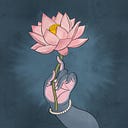Ganjīfa
The ancient Indian card game
“Ganjifa” or “Ganjapa” is the name given to an ancient Indian trick-taking card game. Prior to the modern Europeanised cards, the playing card system in almost every major part of the world were popularly known as Ganjifā, Ganjafeh, Ganjafāh, Kanjafeh, Kanjifāh, Kanjapā or Kanjafāh. It is commonly believed that ‘Ganjifa’ name comes from the word ‘Gunj’ which is Persian for ‘treasuryʹ.
The local people of Indian kingdoms included these cards in their culture, they started preparing and playing them in their respective indigenous styles. There was a time when these cards were made and played all over the country with various designs and various sets of rules. With time, however, their popularity declined, restricting their manufacturing to certain centers such as Puri in Odisha, Sawantwadi in Maharashtra, Nirmal in Andhra Pradesh, Mysore in Karnataka, Bankuda in West Bengal and a few more places across the country where the traditional styles of painting are still practiced.
Layered paper & wood. In box of wood, with a painted sliding lid.
Victoria and Albert Museum
Ganjapa is played as “Charirangi” (cards of 4 colors), “Atharangi” (cards of 8 colors), “Dasarangi” (cards of 10 colors), “Bararangi” (cards of 12 colors), “Chaudarangi” (cards of 14 colors) and “Sohalarangi” (cards of 16 colors).
The speciality of these cards is that they are traditionally hand-painted on leather or wood. Ganjifa cards are usually small, circular cards (or sometimes rectangular), and the pack generally contains 96 cards divided into eight suits of twelve. This was a game that was popular and played across Medieval India. Each region in the country had its own theme for the cards, depending upon the popular local culture.
In Orissa, themes of painting are very closely associated with the culture of the place. Raghurajpur and Puri mostly produce Daśāvatāra and the cards manufactured at Sonepur are based on the epic of Ramayana as the regions have close cultural affinity with the respective themes. However, the Daśāvatāra set is most popular throughout Odisha.
Besides these, some rare themes are quite significant as far as the cultural component of the game is concerned. Among them the major ones are the Navakunjara theme which is based on Arjuna’s penance and Lord Vishnu’s appearance before him, the Krishnashtamalla theme which is about the eight feats of young Lord Krishna and the particularly rare Ashtadikpala Ganjapa card set which depict the lords of the eight cardinal directions.
Ganjifa is still sometimes played today, although mostly by older people. It is based on the players aiming to collect ‘tricks’, rather like the western games of whist or bridge.
read about Mysore Ganjifa here
https://twitter.com/hinduaesthetic/status/1329379988110393344?s=20
from Sawantwadi:
“Ganjifa is never played with money, the cards have the face of god, and you never gamble with god.”
Sources
- Ashtadikpala: A Rare and Unusual Set of Ganjifa Cards, Arunima Pati
______________________________________________________________
If you find value in my work, I hope you consider becoming a patron through Patreon. Hindu Aesthetic requires a lot of time and effort and your support would mean that I can continue bringing you the highest quality content. Link to my Patreon:
